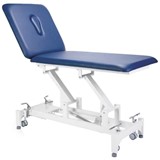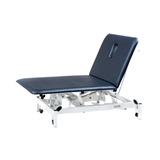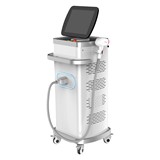Unlocking the power of Thermage
The world of aesthetic treatments is continuously evolving, with innovative technologies like Thermage offering real results. However, quality patient outcomes relies on the initial steps – consultation and diagnosis, as much as it does the actual treatment. Proper consultation and diagnosis provide a roadmap to achieving the desired outcomes, ensuring safety and minimising risks. This feature will delve into the significance of these steps and how they unlock the true power of Thermage treatments.
The Cornerstone of Success: Patient Consultation
The initial patient consultation sets the stage for all subsequent aesthetic procedures, including Thermage. This initial interaction serves as a vital platform for open and honest communication between the patient and the aesthetic practitioner. It‘s during this stage that a mutual understanding is cultivated, which is crucial for a successful outcome.
In this exploratory stage, the practitioner gains insights into the patient‘s skin health history, lifestyle, and skincare habits. Equally important, the patient is encouraged to share their skincare goals, expectations, and any apprehensions about the proposed treatment. This shared knowledge aids in customising the treatment plan to the patient‘s individual needs and comfort level.
Additionally, the consultation stage affords the patient an opportunity to ask questions about the Thermage procedure. This includes its benefits, potential side effects, and what to expect during and after the treatment. The practitioner, on the other hand, can clarify any misconceptions, offer professional advice, and help set realistic expectations.
Overall, the patient consultation phase is a critical step that fosters trust between the patient and practitioner.
This trust ensures that the patient feels comfortable and confident proceeding with the treatment, significantly contributing to its success. Therefore, the importance of this phase the overall treatment process cannot be understated.
The Diagnosis Step: Identifying the Right Treatment Plan
The phase following the patient consultation is the diagnosis step, an integral part of the treatment planning process. In this stage, the practitioner uses their expert knowledge and tools to evaluate the patient’s skin condition meticulously.
The goal of this step is to identify the specific skin concerns that need to be addressed, which can range from wrinkles and fine lines to skin laxity and uneven texture. Moreover, this diagnosis step allows the aesthetic practitioner to fully comprehend the skin type of the patient, a crucial factor in planning an effective Thermage treatment.
The diagnosis step provides the practitioner with invaluable information about the skin’s current condition, thus influencing the choice of the treatment and approach. For instance, a patient with advanced signs of ageing and high skin laxity may require a more intensive Thermage treatment approach.
This phase not only involves visual inspection of the skin but also detailed conversations with the patient. An understanding of patient history also plays a role in the diagnosis process. The practitioner takes into account past skincare routines, ifestyle habits, and any previous aesthetic procedures.
The aim is to identify a suitable Thermage treatment approach that matches the unique needs of the patient, taking into consideration the patient’s comfort level, lifestyle and expectations from the procedure.
Lastly, the diagnosis stage helps to identify any potential contraindications to Thermage treatment. It’s during this stage that the practitioner can detect any pre-existing skin conditions that might adversely affect the outcomes of the Thermage procedure. In doing so, the diagnosis step contributes significantly to the safety and effectiveness of the subsequent treatment.
The diagnosis step is therefore pivotal in the journey towards achieving smoother, firmer, more contoured and younger-looking skin with Thermage. It is a personalised approach to skincare that enables the best possible results for each patient.
Understanding Your Skin’s Needs:
The Value of Professional Diagnosis
A professional diagnosis extends beyond merely identifying skin concerns; it fosters a deeper comprehension of the skin’s specific needs. It can provide a comprehensive portrait of the skin’s present condition, potential challenges, as well as anticipated responses to aesthetic treatments such as Thermage.
This in-depth understanding is crucial because everyone’s skin is unique, both in terms of appearance and how it responds to treatments. Recognising the individuality of your skin is vital for tailoring treatments to provide optimal results. This tailored approach is particularly important for Thermage treatments, which need to be adjusted to suit the specific site, condition and characteristics of the skin. A professional diagnosis can highlight any underlying skin conditions that could potentially influence the outcome of the treatment. It can also identify early signs of skin ageing, even before they become visible to the naked eye. This proactive approach allows for early intervention, potentially preventing further damage and maintaining the health and vitality of your skin.
Moreover, the diagnosis process also considers the natural ageing process and how it affects the skin’s structure and function over time. By understanding how your skin changes with age, the practitioner can predict how it might react to Thermage treatments. This foresight helps deliver a treatment approach that is not only effective today but can continue to provide benefits in the future.
In essence, a professional diagnosis provides a wealth of information that serves as the foundation for a personalised skincare journey. It equips you and your practitioner with the knowledge needed to make informed decisions about your skin health. This ensures that your Thermage treatment is designed specifically for you, for your unique skin needs, and for your desired results.
Bridging the Gap: From Diagnosis to Treatment
Once a comprehensive understanding of the skin condition and unique needs, has been achieved, the aesthetic practitioner is well equipped to formulate an appropriate Thermage treatment protocol.
The treatment plan lays out the precise parameters for the Thermage treatment, including the specific radiofrequency energy level and the depth of heat penetration in the skin tissue. This is crucial to ensure that the treatment is tailored to target the identified skin issues effectively, whilst simultaneously respecting your comfort level and tolerance.
Furthermore, the practitioner may explain the potential synergistic effect of Thermage treatment with other complementary procedures or skincare products, if applicable.
In the process of bridging the diagnosis to treatment, the practitioner also ensures that you fully comprehend the treatment plan. By clearly explaining each step of the treatment and what it aims to achieve, you can make an informed decision and develop realistic expectations about the procedure’s results.
This step of transitioning from diagnosis to treatment is pivotal in ensuring a smooth, well-planned journey towards healthier and more youthful-looking skin. It reinforces the personalised approach to skincare, providing an aesthetic treatment plan that is bespoke, delivered safely and effectively meets your unique skincare needs and goals.
Ensuring Safety and Minimising Risks
Undoubtedly, patient welfare is paramount in all aesthetic treatments. The importance of consultation and diagnosis in safeguarding your well-being is indisputable. These stages are vital in providing Thermage treatments that are not only effective but also safe.
The consultation phase provides a window of opportunity to uncover any potential contraindications that could impede the safe administration of Thermage treatments. A comprehensive patient history helps identify any past or present medical conditions that may affect the treatment outcome. For instance, skin disorders, allergies, or previous aesthetic procedures may influence your skin’s response to Thermage.
During the diagnosis stage, a thorough assessment of the skin’s current condition and overall health can unearth any underlying skin issues that could pose potential risks. In-depth skin analysis and evaluation of your skin history may detect anomalies, which, when treated appropriately, can prevent complications down the line. It also aids in the selection of the correct Thermage treatment plan, taking into account your unique skin type, concerns, and comfort levels.
Additionally, these stages facilitate open communication and rapport-building between the patient and the practitioner. This trust is vital, allowing you to voice your concerns, apprehensions, and queries openly. The practitioner can then address these, alleviate fears, set realistic expectations, and ensure you are at ease, significantly contributing to the overall safety of the treatment.
Lastly, consultation and diagnosis aid in crafting a personalised treatment plan. Specific parameters for the Thermage treatment, including the precise radiofrequency energy level and the depth of skin tissue heat penetration, are established. This tailor-made approach ensures that the treatment effectively addresses your individual skincare needs without crossing their comfort threshold.
In conclusion, the consultation and diagnosis stages are pivotal in maximising patient safety and minimising risks, ensuring that the Thermage treatment yields desired results, without compromising on patient welfare.



(1)-720x400.jpg)










-160x160-state_article-rel-cat.png)









)ThermageFLX_Front-205x205.jpg)











